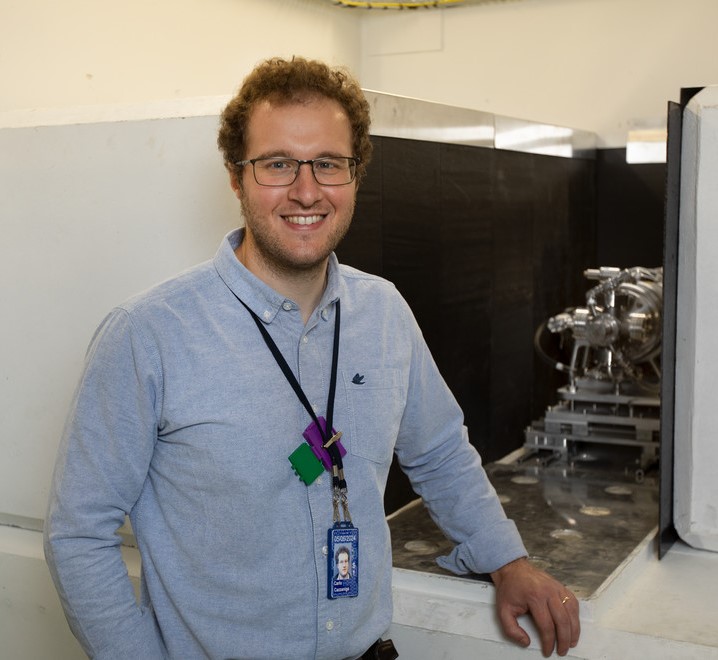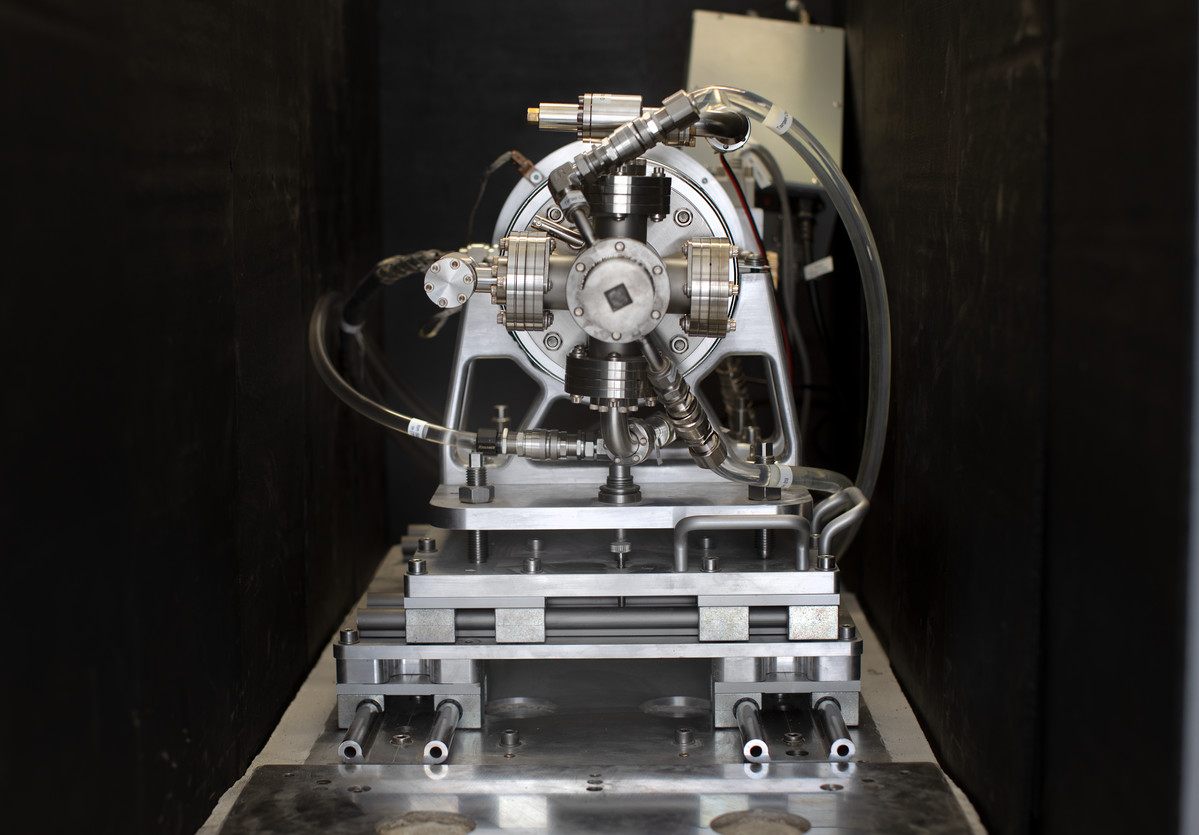The new neutron sources are being installed in the new Neutron Irradiation Laboratory for Electronics (NILE), and will be used by ISIS users to test the effect of cosmic ray damage on electronics, working alongside the ChipIr instrument.
ChipIr uses the high-energy neutrons created by ISIS to test the disruption caused by naturally occurring atmospheric cosmic ray neutrons to electronics, including those used in aerospace, internet routers and autonomous vehicles.
Unlike the way ISIS produces neutrons, which requires a proton synchrotron the size of eight football pitches, it is possible to buy a desktop fusion reactor that produces lower energy neutrons. Although this doesn't produce neutrons that cover the same range of energies as in the atmosphere, or at the same yield as ISIS, they can still be used for some of the investigations that would normally take place on ChipIr.
The desktop set up uses deuterium and tritium: two isotopes of hydrogen that contain different numbers of neutrons. 'Normal' hydrogen does not contain any neutrons, whereas deuterium has one, and tritium two.
There will be two new neutron sources installed as part of NILE: the first accelerates deuterium atoms towards a tritium target, prompting a fusion reaction that produces neutrons and helium atoms. The neutrons produced have an energy of 14 MeV, compared to the up to 800 MeV produced by the ISIS targets. The second accelerates deuterium atoms on a deuterium target, producing 2.5 MeV neutrons.

The reactors will be housed in a bunker at ISIS, similar to the other beamlines, and users can apply for time to use it in the same way as they would for other neutron beamtime. “Although the new sources doesn't produce the same spectrum of neutrons as in the atmospheric environment," explains Carlo Cazzaniga, ChipIr beamline scientist (left); “we can use it for comparison studies, as well as method development and training. We have interest already from our collaborators in academia and industry."
The new compact sources will not only be useful during accelerator maintenance periods, but will be a complementary tool for users doing experiments on ChipIr. “The new facility further extends and complements the existing irradiation capability at ISIS. This makes it an even more attractive centre for the many global electronic companies already working with ISIS on ChipIr to ensure the cosmic ray threat is understood and its effects dealt with," explains Chris Frost, the scientist leading the irradiation work at ISIS.
Other departments at STFC's Rutherford Appleton Laboratory are also collaborating with ISIS on the project. A group at RAL Space who are one of the lead partners in the SWIMMR programme, a major UK project that will improve the UK's capabilities for space weather monitoring and prediction, are helping to fund irradiation studies at ISIS, as well as a team from STFC's Particle Physics Department (PPD).
The team from PPD will be using the reactors to test their dark matter detectors. If they can be used to detect neutrons, this will indicate whether they will be suitable for dark matter detection.
Chris adds; “Whilst we expected this to be useful for our work with RAL Space on the space weather issue, we did not expect to be helping Pawel Majewski from PPD and his team in their hunt for Dark Matter – but a coffee conversation leading to a major collaboration between scientists from different areas is what makes working at RAL so rewarding."
After preparing the bunker where the source will be based, the new devices have been installed and first neutrons were produced this week. If you are interested in carrying out experiments using the NILE beamline, then please contact the ChipIR team.

